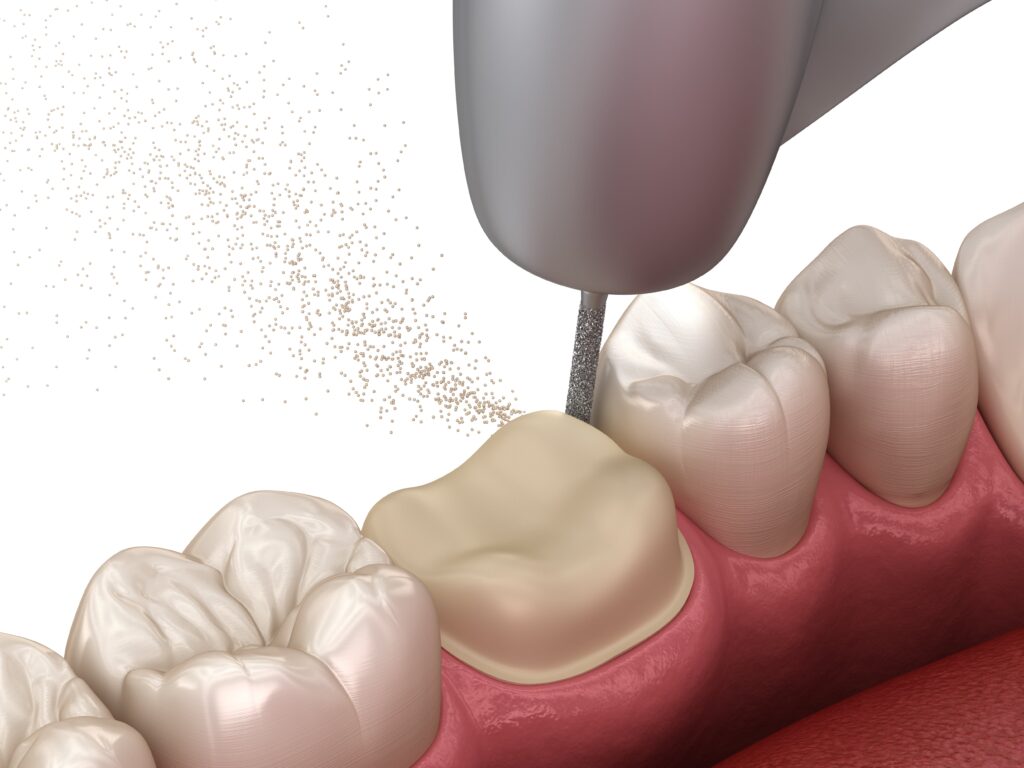When most people hear the word “crown,” they think of a royal coronation. But in the dental world, a crown is something completely different! A dental crown, or cap, is a restoration that covers the entire tooth surface. It is typically used to restore a tooth’s function and appearance after extensive damage has been done. In this blog post, we will discuss the difference between the terms crowns and caps, and answer any other questions you may have!
What is a tooth cap?
A dental cap, or crown, is a restoration that covers the entire tooth surface. It is typically used to restore a tooth’s function and appearance after extensive damage has been done. Traditionally, the term “tooth cap” was used to describe this restoration, however more recently people have begun to call these restorations “crowns”. Both terms mean the same thing, and their name even suggests that the restoration is made to fit on top of the tooth.

Crowns can be used when:
- A tooth is severely decayed
- A tooth is fractured
- A tooth is misshapen
- A tooth is discolored
- A root canal has been performed
- A dental implant has been placed
- A dental bridge has been placed
There are many different materials that can be used to make a crown, including:
- Porcelain
- Ceramic
- Composite resin
- Gold alloy
- Stainless steel
- Porcelain-fused-to-metal
The type of crown you receive will be dependent on many factors, such as:
- The location of the tooth
- The condition of the tooth
- Your personal preference
- Your budget
- The type of crown being placed
There are two types of crowns: permanent and temporary. Permanent crowns are made out of stronger materials, such as porcelain or ceramic, and are meant to be a long-term solution. Metal has also been traditionally used for permanent crowns, although it is not longer as popular due to its appearances. Permanent crowns are usually cemented into place with dental adhesive. Temporary crowns are made out of weaker materials, such as composite resin, and are meant to be a short-term solution. These crowns are usually held in place with temporary dental adhesive or cement.
The Process of Having a Crown Placed

The process of having a dental crown placed is relatively simple. First, the tooth is numbed and prepared by reducing its size. This is done so that the crown can be placed over the tooth without disrupting your bite. Any damaged or decayed tissue will also be removed at this time. Next, an impression or dental scan is taken of the prepared tooth. This will be used to create your custom crown. While your permanent crown is being made, you will be given a temporary crown to wear.
When the permanent crown is ready, you will return to the dentist to have it placed. The temporary crown will be removed and your tooth will be cleaned. The permanent crown will then be checked for fit and color before being cemented into place. In most cases, you can expect this crown to last for about 10-15 years before it needs replacement.
In Conclusion
In this blog post, we have discussed the difference between the terms crowns and caps, and answered any possible questions you may have had. If you have any further questions about dental crowns, or if you think you may need one, be sure to schedule an appointment with your dentist! They will be able to give you more specific information and help you make the best decision for your smile. Thanks for reading!

Dr. Admar holds dual certificates — a Bachelor of Dental Surgery (BDS) in 2010 from India and a Doctor of Dental Surgery (DDS) in 2014 from Canada. He is now a full time practicing dentist in Kamloops where he provides a variety of services, including emergency dentistry. Dr. Admar spends hundreds of hours in continued dental education to stay up to date in cosmetic and implant dentistry and he has achieved several advanced qualifications.


